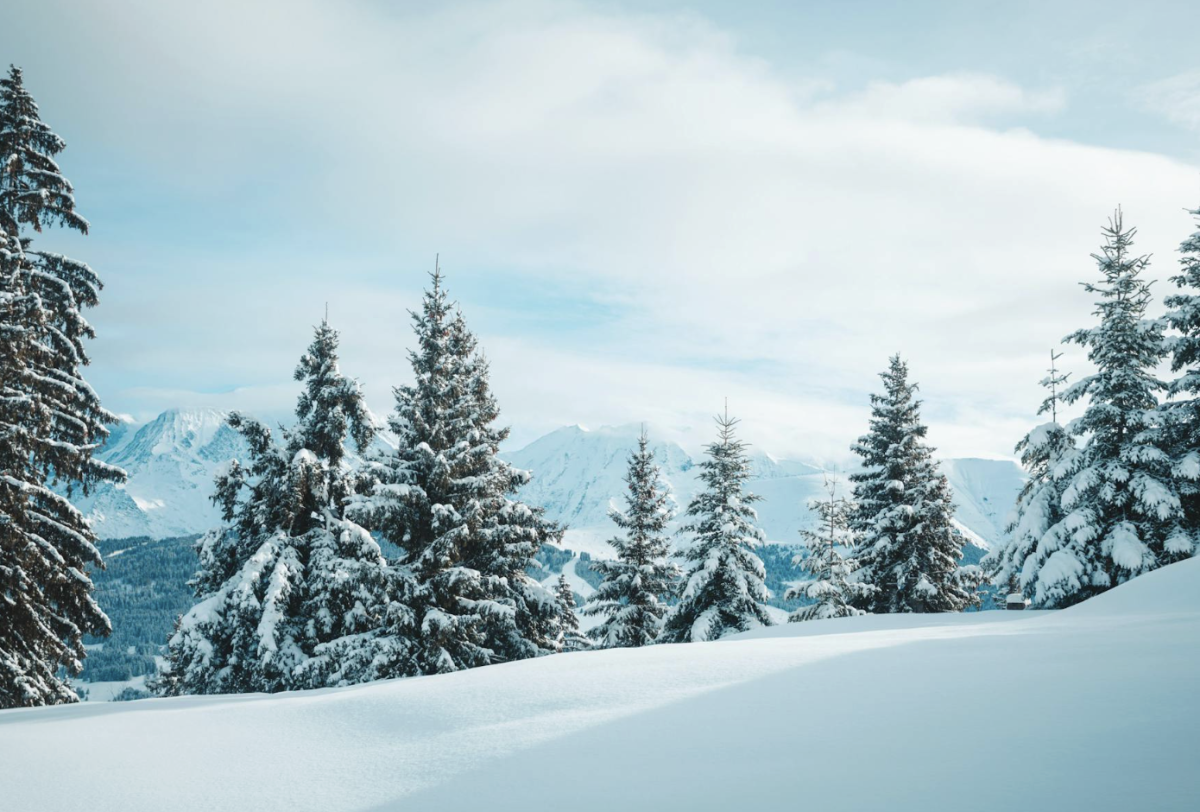
Remember when 20 degrees below zero used to cancel school? Well, there are places on Earth where children attend classes at -50°F and residents consider that just another Tuesday. For the adventurous spirit who's already seen the world's warm corners, these frozen frontiers offer experiences that redefine what it means to truly travel off the beaten path.
These aren't your typical bucket-list destinations. We're talking about places where car engines run continuously for months.
Breath crystallizes instantly into what locals call "the whisper of stars." The very air sparkles with frozen moisture.
Yet one recent traveler described spending New Year's in Oymyakon at -57°C as "not unbearable as you might think."
Before we dive into these extraordinary destinations, let's address the elephant in the room.
Can you actually visit these places safely, especially as a mature traveler? The answer is a cautious yes, but it requires serious preparation and realistic expectations.
What you need to know before you go
Traveling to the world's coldest inhabited places requires more than just packing an extra sweater.
Multiple professional tour operators now offer guided expeditions to places like Oymyakon, complete with specialized equipment, experienced guides, and emergency protocols designed specifically for extreme cold environments.
The logistics alone are staggering.
Most of these destinations require multiple flights and overland journeys on roads with ominous names like "The Road of Bones."
Accommodations range from research stations to local homestays.
Tours typically include stays in country guest houses and English-speaking guides, but don't expect room service or Wi-Fi.
Health considerations for extreme cold travel
Before booking any extreme cold expedition, consult with your doctor about:
• Cardiovascular health (cold puts extra strain on the heart)
• Respiratory conditions (breathing extremely cold air can trigger asthma)
• Joint conditions (arthritis symptoms often worsen in extreme cold)
• Medication storage (some medications can freeze or become less effective)
• Emergency medical evacuation insurance (essential in remote areas)
Planning your polar adventure
"The average January temperature is minus 61 degrees Celsius, on cold days minus 68 degrees"
The most accessible extreme cold destinations for American travelers are actually right here at home.
Fairbanks, Alaska, and International Falls, Minnesota, offer genuine Arctic experiences without the complex visa requirements and lengthy travel times of their Siberian counterparts.
For those venturing to Siberian destinations, the best months are July and August for summer visits, or March for winter expeditions.
March offers the perfect balance of extreme cold with slightly longer daylight hours and more stable weather patterns.
Also read: Leaving for vacation? Don’t skip these 4 crucial steps to keep your home safe from burglars!
America's own frozen frontiers
Fairbanks, Alaska: The gateway to American Arctic
Your most practical starting point for extreme cold adventures might be closer than you think.
Fairbanks regularly sees temperatures drop to -50°F, but comes with the infrastructure and medical facilities that remote Siberian villages lack. The city offers unique experiences you won't find anywhere else.
You can soak in natural hot springs while surrounded by snow and ice. You can watch the Northern Lights dance across the sky up to 240 nights per year.
You can visit the Aurora Ice Museum, an entire building carved from ice.
The Trans-Alaska Pipeline runs nearby, serving as a testament to human engineering in extreme conditions.
What makes Fairbanks particularly senior-friendly is its accessibility. Regular flights connect from major US cities.
Hotels offer heated parking and engine block heater outlets. Medical facilities are readily available.
You can experience genuine Arctic conditions while maintaining reasonable safety margins.
International Falls, Minnesota: America's icebox
Don't underestimate the American Midwest's capacity for bone-chilling cold.
International Falls proudly calls itself "The Icebox of the Nation" and backs up that claim with temperatures that regularly plunge below -40°F.
The town celebrates its frigid identity with the annual Icebox Days festival. The event features ice sculpting competitions and winter activities.
The frozen Rainy Lake becomes a temporary city of ice-fishing houses each winter. Nearby Voyageurs National Park offers winter camping for the truly adventurous.
Also read: 5 vacation spots that could quietly drain your retirement savings
The Siberian experience: For the truly adventurous
For those ready to venture beyond American borders, Siberia offers experiences that exist nowhere else on Earth. But let's be realistic about what you're signing up for.
Oymyakon, Russia: The ultimate cold challenge
Oymyakon offers extreme winter conditions described by travelers as comparable to the Martian climate. It lacks typical tourist infrastructure and is suitable only for those prepared for harsh conditions.
This isn't an exaggeration for dramatic effect.
In Oymyakon, the ground is permanently frozen to depths of nearly 5,000 feet. Cars must run continuously for months or be kept in heated garages.
There's no indoor plumbing anywhere, and mobile phones die within minutes once temperatures drop below -40°F. Yet visitors receive certificates for visiting the coldest permanently inhabited settlement in the world.
Organized tours provide the infrastructure to make this bucket-list experience possible. Local guides share their remarkable survival techniques.
You'll experience phenomena like your breath freezing mid-air with an audible tinkling sound!
Did you know?
Did you know?
In some of Siberia's coldest towns, residents still rely on traditional methods like keeping Yakut horses and cows, whose thick winter coats allow them to survive outdoors in temperatures that would kill most livestock. The local diet includes raw frozen fish and reindeer meat, providing the high-calorie fuel needed to maintain body heat in extreme conditions.
Practical considerations for Russian destinations
Current visa requirements have actually become more accessible.
As of September 2025, the Russian e-visa is now valid for 30 days, simplifying the application process for American travelers.
However, travel insurance specifically covering extreme conditions is mandatory and can be difficult to obtain.
The journey itself is an adventure.
Travelers fly to Yakutsk, followed by eight hours on the infamous Kolyma Highway, also known as "The Road of Bones."
This isn't a road trip for the casual traveler, but for those who make the journey, it's utterly transformative.
Also read: Dangerous freeze alert! Protect yourself from the deadly cold wave sweeping the US
Beyond Russia: Arctic alternatives
Canada's frozen north
Canada offers several extreme cold destinations with more straightforward logistics for American travelers.
Yellowknife provides genuine Arctic experiences with better infrastructure than Russian alternatives.
The city sits on 2.6-billion-year-old bedrock and offers spectacular Northern Lights viewing opportunities.
Eureka, Nunavut, represents one of the most remote inhabited places on Earth, though access is generally limited to research expeditions.
For most travelers, Yellowknife provides the perfect balance of extreme conditions and reasonable accessibility.
Also read: After decades of dreaming, two friends in their 80s take the trip of a lifetime
What to pack and expect
Preparing for extreme cold travel goes far beyond warm clothing. Professional operators provide detailed packing lists, but expect to need specialized gear.
This includes boots rated to -100°F, multiple layers of insulating clothing, face protection, and emergency supplies.
Most importantly, prepare mentally for conditions unlike anything you've experienced.
In true Arctic conditions, exposed skin can freeze in minutes. Metal objects become dangerous to touch with bare hands.
The simple act of breathing requires conscious effort as your nose hairs freeze with each inhalation.
Also read: 15 Winter vacation spots seniors will love—from cozy retreats to sunny escapes
The costs of extreme adventure
These aren't budget trips.
Professional expeditions to places like Oymyakon can cost $5,000–$15,000 per person, including specialized gear, guides, and emergency preparedness.
Domestic options like Fairbanks or International Falls offer extreme cold experiences at a fraction of the cost.
Factor in specialized travel insurance and emergency evacuation coverage.
Weather delays are common, and flights are often cancelled.
Budget for flexibility in your schedule and additional accommodation costs.
Essential planning checklist for extreme cold travel
- Consult your doctor about health risks and medication storage
- Purchase comprehensive travel insurance including medical evacuation
- Book through reputable operators with emergency protocols
- Pack specialized cold-weather gear (don't rely on regular winter clothing)
- Allow extra days for weather delays and cancellations
- Inform family of detailed itinerary and emergency contacts
- Consider domestic options first (Fairbanks, International Falls) before international extremes
The reward for the risk
Why would anyone choose to visit places where the air itself can be dangerous?
The answer becomes clear when you witness phenomena that exist nowhere else: the ethereal beauty of ice fog at -60°F, the way sunlight creates rainbow halos around your breath, and the profound silence of landscapes where sound itself seems frozen.
These destinations offer more than just extreme experiences; they provide perspective on human resilience and the remarkable ways communities adapt to conditions that would seem impossible to survive.
You'll meet people who've built thriving cultures in Earth's most challenging environments, whose warmth and hospitality stand in stark contrast to their frigid surroundings.
For many travelers, these journeys become defining experiences.
They serve as proof that age is no barrier to adventure and that the world still holds wonders beyond our comfort zones.
Making the decision
These destinations aren't for everyone, and there's no shame in deciding they're beyond your comfort zone.
The physical demands are real. The risks are significant.
The conditions can be genuinely dangerous even with professional guidance.
But for those with the health, resources, and spirit for such adventures, they represent some of the last truly unique travel experiences on Earth.
In an age when most destinations have been photographed, reviewed, and made accessible to mass tourism, these frozen frontiers remain genuinely extraordinary.
Read next:
- 23 ways summer vacations in the ’60s looked different from today
- These items could get you flagged—experts warn travelers about this packing mistake
- Revolutionize your vacations: Discover how "sleep tourism" is transforming travel in 2025!
Have you ever considered testing your limits against Earth's most extreme conditions? Whether it's the accessible Arctic experience of Fairbanks or the ultimate challenge of Siberian villages, these destinations offer adventures that will be conversation pieces for the rest of your life.
What's the coldest weather you've ever experienced, and would you be willing to push those boundaries for an unforgettable journey?
Original Article
https://www.pulse.com.gh/articles/l...n-the-world-you-can-visit-2025090817065416171
Russia Travel Guide (2025) - Against the Compass
Cited text: New Years in Oymyakon -57c was my dream and not unbearable as you might think.
Excerpt: one recent traveler described spending New Year's in Oymyakon at -57°C as "not unbearable as you might think."
https://againstthecompass.com/en/russia-travel/
Pole of Cold - Tour - Yakutia
Cited text: Would you like to feel the real cold – total, wide-reaching and full-scale? Then this tour is for you! This time BaikalNature propose to you to visit ...
Excerpt: Multiple professional tour operators now offer guided expeditions to places like Oymyakon
https://www.baikalnature.com/tours/210
Travel Oymyakon, tour stunning Yakutia in winter
Cited text: Reach Oymakon, the Pole of Cold by winter roads of Yakutia · Discover Sakha Republic, traditions, cuisine and culture · Dog sledding, snowmobile safar...
Excerpt: Tours typically include stays in country guest houses and English-speaking guides
https://discoveryrussia.com/tour/490/
Tours to Yakutia | Pole of Cold | Discovery Russia
Cited text: In summer, the best months for trips to Yakutia are July and August, in winter - March.
Excerpt: For those venturing to Siberian destinations, the best months are July and August for summer visits, or March for winter expeditions
https://discoveryrussia.com/destination/tours-to-yakutia/
Russia: All You Must Know Before You Go (2025) - Tripadvisor
Cited text: For the adventurous, Oymyakon offers extreme winter conditions, described by some travelers as comparable to the Martian climate. However, it is noted...
Excerpt: Oymyakon offers extreme winter conditions described by travelers as comparable to the Martian climate, though it lacks typical tourist infrastructure and is suitable only for those prepared for harsh conditions
https://www.tripadvisor.com/Tourism-g294459-Russia-Vacations.html
Pole of Cold - Tour - Yakutia
Cited text: Here you will receive a certificate for visiting the coldest permanently inhabited settlement in the world.
Excerpt: visitors receive certificates for visiting the coldest permanently inhabited settlement in the world
https://www.baikalnature.com/tours/210
Russia Travel Guide (2025) - Against the Compass
Cited text: Update September 2025: The e-visa for Russia is now valid for 30 days ·
Excerpt: As of September 2025, the Russian e-visa is now valid for 30 days
https://againstthecompass.com/en/russia-travel/






